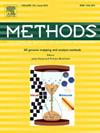脆弱的方法,破碎的信任:重新思考科学责任
IF 4.3
3区 生物学
Q1 BIOCHEMICAL RESEARCH METHODS
引用次数: 0
摘要
科学存在可信度问题,这不仅仅是政治家、记者或阴谋论者的错。它始于科学本身。这篇综述探讨了有缺陷的方法和选择性报告,以及将图像置于清晰度之上的过于圆滑的沟通,是如何使分子生物学、诊断学和相关应用科学中的不良做法正常化的。定量实时聚合酶链反应(qPCR)提供了一个明显的例子:一种概念简单、技术成熟的技术,尽管在过去的二十年中发布了标准,并一再呼吁方法的严谨性,但仍然经常被滥用。如果qPCR经常被误用,那么对更复杂、更不透明的技术的信心意味着什么?另一个问题在于科学发现被错误报道或夸大的方式。这种扭曲的影响超出了个别研究的范畴。从mmr -自闭症恐慌到COVID-19检测和疫苗犹豫,它们加剧了混乱,侵蚀了公众信任,危及了公共卫生。因此,当有缺陷或被夸大的发现影响公共政策或临床决策时,损害破坏了科学作为可靠的知识来源和知情选择的作用。信誉必须建立在透明的实践、道德责任以及对如何产生结果和如何传达结果的关注之上。除非科学家们认识到交流不是价值中立的,而且我们的公众声音的影响远远超出了实验室,否则公众的怀疑是有道理的。本文章由计算机程序翻译,如有差异,请以英文原文为准。

Fragile methods, fractured trust: rethinking scientific responsibility
Science has a credibility problem, and it is not just the fault of politicians, journalists, or conspiracy theorists. It begins within science itself. This review examines how flawed methods and selective reporting, combined with overly polished communications that prioritise image over clarity, have normalised bad practice in molecular biology, diagnostics, and related applied sciences. The quantitative real-time polymerase chain reaction (qPCR) offers a clear example: a conceptually simple, technically mature technology that is nonetheless routinely misused, despite published standards and repeated calls for methodological rigour over the past two decades. If qPCR is so often misapplied, what does that suggest about confidence in more complex, less transparent technologies? An additional problem lies in the way scientific findings are misreported or exaggerated. Such distortions have far-reaching consequences beyond individual studies. From the MMR-autism scare to COVID-19 testing and vaccine hesitancy, they have fuelled confusion, eroded public trust, and endangered public health. Consequently, when flawed or overstated findings shape public policy or clinical decisions, the damage undermines science’s role as a reliable source of knowledge and informed choice. Credibility must rest on transparent practice, ethical responsibility, and attention to both how results are produced and how they are communicated. Until scientists recognise that communication is not value-neutral, and that our public voice carries consequences far beyond the lab, public scepticism will be justified.
求助全文
通过发布文献求助,成功后即可免费获取论文全文。
去求助
来源期刊

Methods
生物-生化研究方法
CiteScore
9.80
自引率
2.10%
发文量
222
审稿时长
11.3 weeks
期刊介绍:
Methods focuses on rapidly developing techniques in the experimental biological and medical sciences.
Each topical issue, organized by a guest editor who is an expert in the area covered, consists solely of invited quality articles by specialist authors, many of them reviews. Issues are devoted to specific technical approaches with emphasis on clear detailed descriptions of protocols that allow them to be reproduced easily. The background information provided enables researchers to understand the principles underlying the methods; other helpful sections include comparisons of alternative methods giving the advantages and disadvantages of particular methods, guidance on avoiding potential pitfalls, and suggestions for troubleshooting.
 求助内容:
求助内容: 应助结果提醒方式:
应助结果提醒方式:


